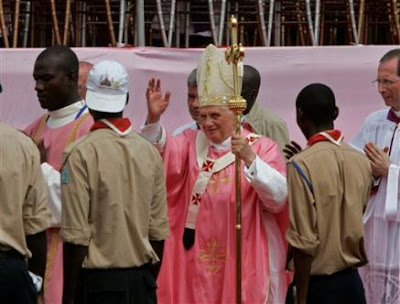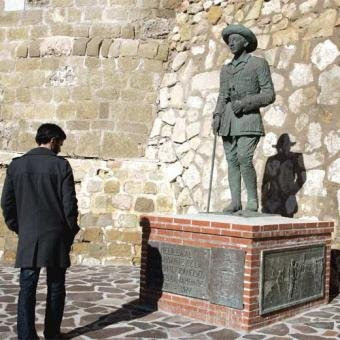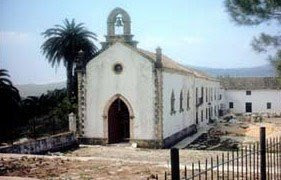 As I am sure many readers are aware the history of Gibraltar and San Roque are intertwined. So I am thankful to Carlos Jordan at the San Roque Tourist Office for sending me information on a series of tours in which both the Rock and its near neighbour are working on together.
As I am sure many readers are aware the history of Gibraltar and San Roque are intertwined. So I am thankful to Carlos Jordan at the San Roque Tourist Office for sending me information on a series of tours in which both the Rock and its near neighbour are working on together.Parody Travel in Gibraltar and the San Roque tourist office have combined to offer a joint programme of tours. The project was launched at the FITUR travel fair in Madrid at the end of January and is historic in itself, because it is the first time that the Rock and San Roque have co-operated in this way.
History tells us that in 1704, when the Rock was taken for England, the majority of the Spanish residents fled. Many went to San Roque, their traditional place of pilgrimage, and it is in the church and museums of the municipality that you will find many of the artefacts dating back to the days when Spain held the Rock.
For visitors to Gibraltar there is the Original Rock Tour that is carried out by a minibus with a guide and lasts around 90 minutes. Sites visited include Europa Point (where the Mediterranean & the Atlantic meet), entrance to The Upper Rock, St. Michaels Cave and the Famous Barbary Apes. In addition there is the highly recommended optional visit to the WWII Tunnels. This is a guided walking tour taking around 45 minutes.
Back in San Roque there is the “Monumental” tour. This is a guided walk around the historic centre of the town and also takes around 90 minutes. This includes the old quarter of the town: Saint Mary the Crowned Parish Church, The Governor’s Palace, The Bull Ring, typical Andalusian streets and squares, as well as 3 local museums. Here there are two optional extras. You can visit the Punic-Roman Carteya archaeological site, again duration around 45 minutes or the take the now famous tapas culinary experience.
In addition to the above tours there are also visits to Gibraltar’s Museum or to see the Dolphins in the Bay. For further information you can contact Parody on 00 350 20076070 or the San Roque Tourist Office (which has English speakers) on 956 694 005.
As Easter is upon us I should also remind you that San Roque has a week of major processions. However the ‘Pièce de résistance’ is/are the Good Friday processions that have been declared of national tourist interest by the Andalucía government. This is a stunning spectacle, with Roman soldiers on horseback but of special interest is the fact that many of the figures carried through the streets were taken by the Spanish population as they fled Gibraltar back in 1704. Details of this event that starts on Good Friday afternoon can be obtained from the San Roque tourist office.























